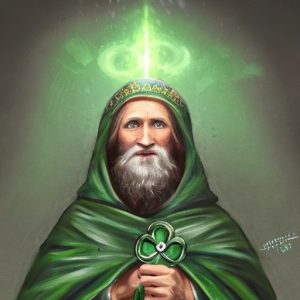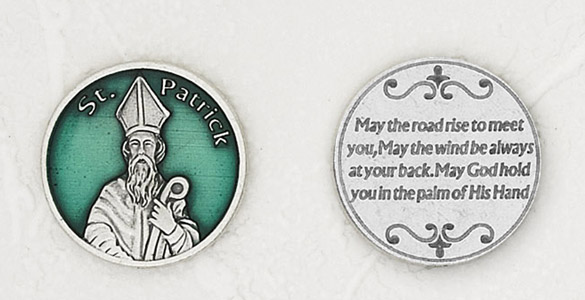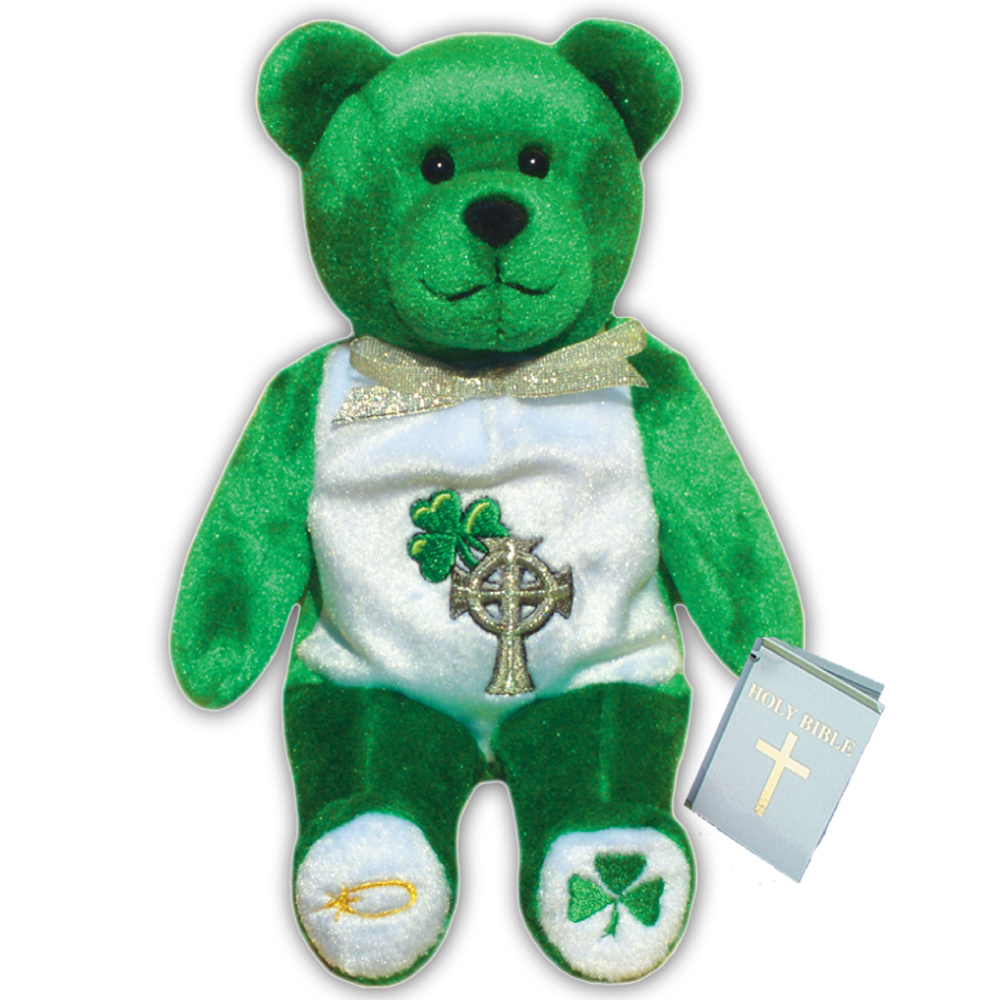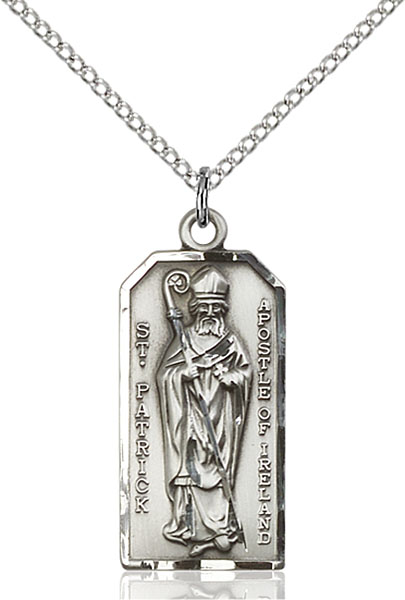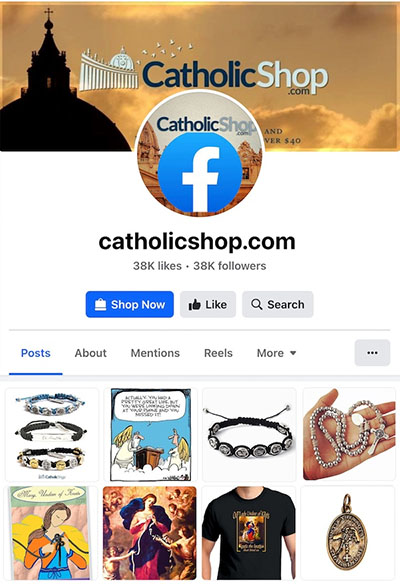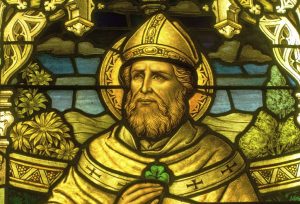
Who was Saint Patrick? When and where did he live? St. Patrick’s day is on March 17th, so here are 13 facts about him that might surprise you! $60
Did you know that St. Patrick had divine visions, a sense of humor, and that his name wasn’t actually Patrick? Here we explore the secrets of Saint Patrick.
Saint Patrick wasn’t Irish.
 Universally known and revered as the Patron Saint of Ireland, Patrick was born in Roman Britain to a middle-class family in about A.D. 390.
Universally known and revered as the Patron Saint of Ireland, Patrick was born in Roman Britain to a middle-class family in about A.D. 390.
While he was raised in a Catholic family, he wasn’t particularly devout until, at the age of 16, he was kidnapped by Irish raiders and taken back to Ireland where he was sold and put to work as a shepherd.
Saint Patrick Was Once a Slave
After being kidnapped, St. Patrick spent six years in captivity in Ireland, during which time he worked at the orders of his captors.
It was during this time that he became a devout Christian and began to have visions of God and cultivated his relationship with God.
Saint Patrick Had Divine Visions
6 years after his kidnapping, he had a vision from God saying, “Your hungers are rewarded. You are going home. Look — your ship is ready,” at which point he escaped his captors, walked 200 miles to the shore, boarded a ship and headed to France and eventually back home.
 His name wasn’t actually Patrick.
His name wasn’t actually Patrick.
After arriving in France and studying for many years, eventually becoming a Priest and Bishop, he changed his given name (Maewyn Succat) to Patricius (or Patrick), which derives from the Latin term for ‘father figure.’
It was almost 30 years after his escape from slavery and vocation to priesthood that Patrick was called back to Ireland in a another vision from God.
He was a fearless believer in a land of danger
At the time when Patrick returned as a missionary, Ireland was a savage country with feuding tribes of Celts and Druids. In 432 A.D., he built the first Catholic church in Ireland and set about converting, baptising, proselytizing and spreading the light of Christ to the people of Ireland.
Patrick’s ministry lasted 29 years. He baptized over 120,000 Irishmen and planted 300 churches. He laid the groundwork in what would become the dominant religion of Ireland.
He Used the Shamrock to Teach
St. Patrick used the three-leafed shamrock to explain the concept of the Holy Trinity to the pagan Irish. The three leaves, he explained, represented the Father, the Son, and the Holy Spirit, while the stem represented the unity of the Trinity.
St. Patrick was not the first Christian missionary in Ireland
Contrary to popular belief, St. Patrick was not the first Christian missionary in Ireland. There were already Christians living in Ireland when he arrived, and there were also other Christian missionaries who had visited the country before him.
According to historical records, Christianity had already been introduced to Ireland by Palladius, a bishop who was sent to Ireland by Pope Celestine in 431 AD, about a decade before St. Patrick arrived.
However, St. Patrick is credited with spreading Christianity throughout Ireland and is considered one of the most successful missionaries of all time.
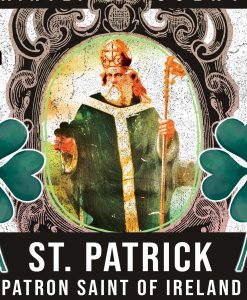
He never chased away the snakes
Legend has it that Ireland’s famous lack of snakes was due to Saint Patrick chasing them away while he fasted on a mountain top. While there are indeed no snakes native to Ireland, it’s because of the last Ice Age which rendered Ireland all but uninhabitable to many reptiles.
As Ireland is an island, it would also be very difficult for snakes to arrive naturally. While Saint Patrick achieved many amazing things in his life, removing all the snakes from Ireland was not one of them.
The story is likely a metaphor for St. Patrick’s efforts to convert the pagan Irish to Christianity.
He Wasn’t Alone in His Mission
St. Patrick was accompanied by a group of fellow missionaries, including several bishops and priests.
In addition to Palladius and St. Patrick, there were other missionaries who played a role in spreading Christianity throughout Ireland.
For example, St. Columba, who lived in the 6th century, founded several monasteries in Ireland and is credited with spreading Christianity to Scotland.
St. Brigid, who lived in the same time period, founded a monastery in Kildare and is considered one of Ireland’s patron saints.
He Wrote a Confession
St. Patrick is one of the few early Christian figures whose writings have survived to this day. His Confession, written in the 5th century, provides insight into his life and mission. Patrick was likewise known for his humility.
St. Patrick was a gifted linguist
St. Patrick is known to have been fluent in several languages, including Irish, Latin, and possibly even Welsh. This was a significant advantage in his missionary work, as it allowed him to communicate with people from different backgrounds and cultures.
St. Patrick’s Day Wasn’t Always a Big Celebration
St. Patrick’s Day has become a major holiday in Ireland and around the world, but it wasn’t always celebrated with parades and green beer. In fact, for many years it was a religious holiday, with many businesses and schools closed. It wasn’t until the 1970s that St. Patrick’s Day became a national holiday in Ireland, and it wasn’t until the 1990s that it became a major celebration in the United States.
St. Patrick Wasn’t Always A Solemn Saint
Although St. Patrick is now considered one of the most solemn saints in the Catholic Church, he was actually known for his lightheartedness and sense of humor. Hmmm, aybe he was Irish after all?
Saint Patrick’s Day is a day of peace, as well as celebration.
The first Saint Patrick’s Day celebration in America was held in New York in 1762 by Irish members of the British army. The day soon turned into a nationwide celebration of Catholicism and anti-British sentiment. As Irish immigrants continued to stream into the New World, the old tensions of Catholic vs. Protestant came with them.
Often celebrating with different parades and different colors on different days, the Irish Catholic and Irish Protestant celebrations would devolve into feuding and brawling. But as the years went by and tensions eased with the help of clergy from both sides, Saint Patrick’s Day become known as a day of Christian unity and peace.
Just as Saint Patrick navigated the chasm between pagan and Catholic Ireland, Saint Patrick’s Day has come to be known, especially in Ireland, as a day of building bridges between factions for the sake of celebrating a common Irish heritage.
As you sit down on St. Patrick’s Day to enjoy some corned beef and cabbage, or join family and friends to celebrate, remember the real Saint Patrick; the man behind the holiday.
It’s a day to be thankful for the sacrifices of our Irish ancestors as well as the man who brought the word of God to his adopted home of Ireland.
Read more about St. Patrick in our article:
St. Patrick in his own words
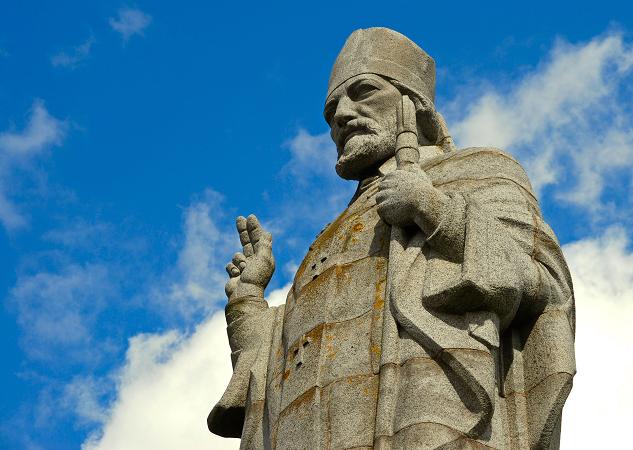
ST. PATRICK ITEMS
Click here to see them all
FEATURED ST. PATRICK ITEMS
St. Patrick Coin with Irish Prayer
St. Patrick Scented Candle
St. Patrick Holy Bear
St. Patrick Pendants
May the luck of the Irish and the blessings of St. Patrick be upon you!

